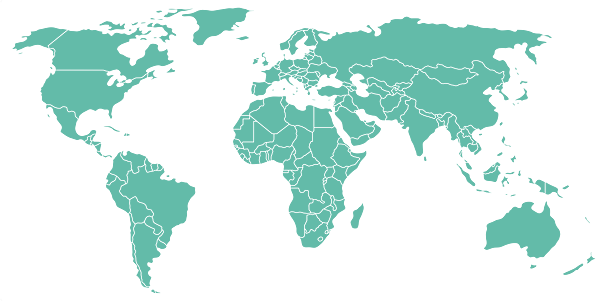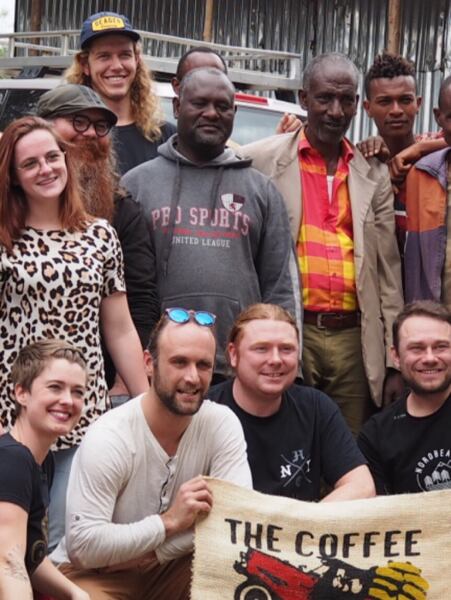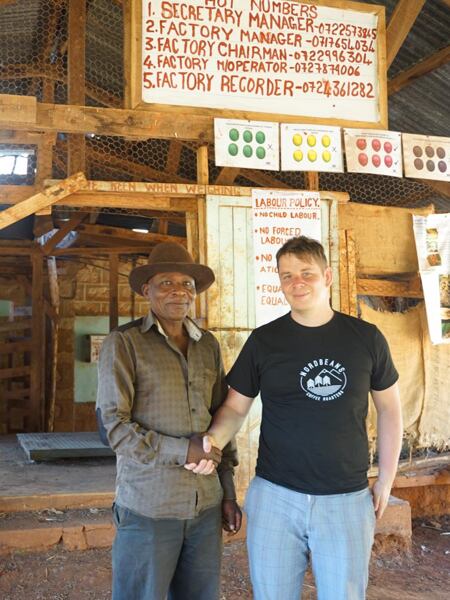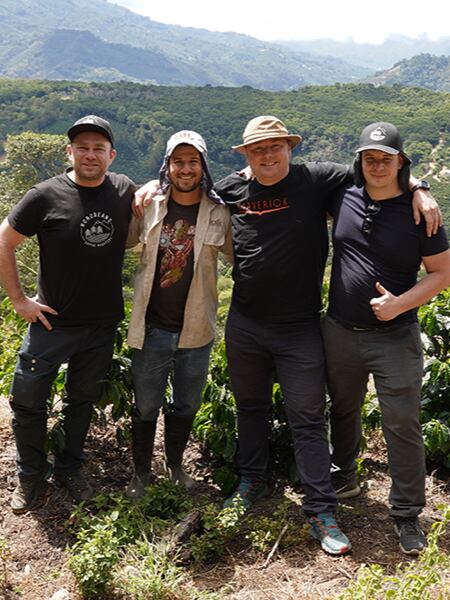Coffee trips
Are you interested in where your coffee comes from?
We have always placed emphasis on sharing the stories of the people behind your coffee.
That’s why we regularly visit our producer partners and farmers to understand the dynamics of their production and to tell their stories.
This way, we ensure that we always bring you the most interesting coffees that we discover directly on the farms.
These journeys have taken us to some of the most fascinating corners of the world.

Read about how coffee is grown around the world

Central America
Central America is a conceptual part of North America. This term refers to the territory of seven independent countries: Mexico, Guatemala, Belize, Honduras, Nicaragua, Costa Rica, and Panama.
The entire region is significant in terms of coffee production, as each country offers a completely different potential for quality and conditions for cultivation. Honduras, Mexico, and Guatemala rank among the top ten coffee producers in the world.
However, coffee is not grown in Central America just for the volume. For example, in Panama, coffees are grown that receive record scores at auctions and are sold for astronomical amounts.
In all these countries, coffee is commonly grown on small farms run by families with a few employees, who hire seasonal workers for the harvest.
South America
South America is most commonly associated with Brazil, which is the largest coffee producer in the world. However, this part of the American continent is home to many other interesting coffee-growing countries such as Colombia, Peru, Ecuador, Bolivia, and Venezuela.
Throughout South America, there are notable contrasts in production. On one side are the large farms in the Brazilian lowlands, where coffee is grown in rows and harvested by machines. On the other side are small producers high in the Colombian or Peruvian mountains, who hand-harvest coffee in very steep hills.
Africa
The most significant coffee-growing region on the continent is East Africa, where Ethiopia and Uganda are located. These two countries are the only ones in Africa that rank among the top ten coffee producers in the world. In addition to them, East Africa is also home to other coffee-growing countries such as Kenya, Rwanda, Burundi, Tanzania, and Madagascar.
In Africa, coffee is mostly grown within agricultural cooperatives. Due to the level of development in the individual countries, intensive forms of agriculture have not yet fully developed, so farmers grow coffee on small plots that can resemble a typical Czech garden in size. The cherries are then taken to a cooperative processing facility or collection stations for further processing.
The cradle of coffee plants is located in this part of Africa, which offers enormous genetic potential for breeding hybrid varieties. The most significant coffee-producing country in Africa is Ethiopia, which ranks fifth in global production.
Asia
The production of coffee has an immensely rich history in Asia. The coffee plant spread from Ethiopia to the rest of the world primarily through Asian countries. It was first brought to Yemen, where it began to be cultivated for the first time, after which seedlings were smuggled to India, and from there they moved to Indonesia, Réunion Island, and gradually to the rest of today's coffee-producing countries.
Today, three Asian countries are among the top ten coffee-producing nations in the world: Vietnam, Indonesia, and India. The majority of production in all these countries consists of inexpensive robusta, which is grown intensively to fill the commodity market.
However, the historical role and cultivation methods of coffee in Yemen are truly fascinating.
Central America
Central America is a conceptual part of North America. This term refers to the territory of seven independent countries: Mexico, Guatemala, Belize, Honduras, Nicaragua, Costa Rica, and Panama.
The entire region is significant in terms of coffee production, as each country offers a completely different potential for quality and conditions for cultivation. Honduras, Mexico, and Guatemala rank among the top ten coffee producers in the world.
However, coffee is not grown in Central America just for the volume. For example, in Panama, coffees are grown that receive record scores at auctions and are sold for astronomical amounts.
In all these countries, coffee is commonly grown on small farms run by families with a few employees, who hire seasonal workers for the harvest.
South America
South America is most commonly associated with Brazil, which is the largest coffee producer in the world. However, this part of the American continent is home to many other interesting coffee-growing countries such as Colombia, Peru, Ecuador, Bolivia, and Venezuela.
Throughout South America, there are notable contrasts in production. On one side are the large farms in the Brazilian lowlands, where coffee is grown in rows and harvested by machines. On the other side are small producers high in the Colombian or Peruvian mountains, who hand-harvest coffee in very steep hills.
Africa
The most significant coffee-growing region on the continent is East Africa, where Ethiopia and Uganda are located. These two countries are the only ones in Africa that rank among the top ten coffee producers in the world. In addition to them, East Africa is also home to other coffee-growing countries such as Kenya, Rwanda, Burundi, Tanzania, and Madagascar.
In Africa, coffee is mostly grown within agricultural cooperatives. Due to the level of development in the individual countries, intensive forms of agriculture have not yet fully developed, so farmers grow coffee on small plots that can resemble a typical Czech garden in size. The cherries are then taken to a cooperative processing facility or collection stations for further processing.
The cradle of coffee plants is located in this part of Africa, which offers enormous genetic potential for breeding hybrid varieties. The most significant coffee-producing country in Africa is Ethiopia, which ranks fifth in global production.
Asia
The production of coffee has an immensely rich history in Asia. The coffee plant spread from Ethiopia to the rest of the world primarily through Asian countries. It was first brought to Yemen, where it began to be cultivated for the first time, after which seedlings were smuggled to India, and from there they moved to Indonesia, Réunion Island, and gradually to the rest of today's coffee-producing countries.
Today, three Asian countries are among the top ten coffee-producing nations in the world: Vietnam, Indonesia, and India. The majority of production in all these countries consists of inexpensive robusta, which is grown intensively to fill the commodity market.
However, the historical role and cultivation methods of coffee in Yemen are truly fascinating.
Check out our travel experiences

Colombia 2015
Our first coffee journey, where we discovered the magical Finca Cocondo. We've been presenting this coffee every year since then.

Ethiopia 2018
On this journey, we met the Dukamo family. We've been roasting coffee from their Keramo processing station every year since.
Would you enjoy dedicating your life to coffee?
We’re always looking for new talents to join our team. If you like our work, be sure to check out our open positions or reach out and tell us about yourself.

#Liberec #Nordbeans
@nordbeans
Follow us every step of the way so you don't miss anything from Nordbeans!















































